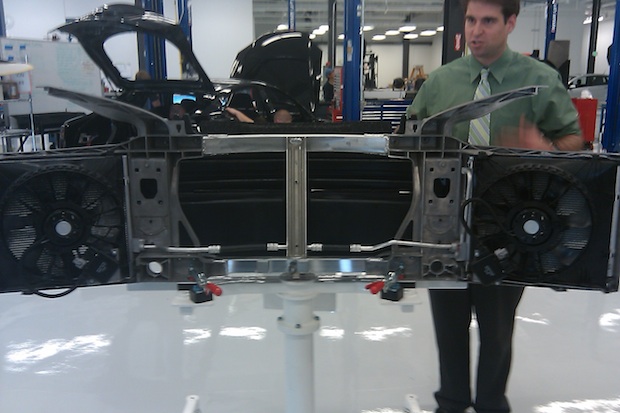@gavine, thanks for finding something appropriate. I have a comment under that video, 4 months old.
How fast could current cars charge with no thermal or amperage imitations? Considering just the cell C rate at optimal temperature.
There will never be 100% efficient chemical battery. And the core (center part) of the cell will get too hot, even if you have
unlimited amount of cooling around the cell available.
Though Ioniq appears to have the fastest C-rate. 28kWh battery that charges at 2.5C until 80% SOC (70kW rate)
Imagine Tesla's 100kWh battery charging at speed up to 250kW. Something similar.
Without external-provided coolant, charge rates will never get down to those approaching gasoline fill times; there is simply too much heat released during high powered charging, and it's unreasonable to expect efficiencies to rise to the degree needed to prevent that. While long charge times may not bother us, does bother a large portion of the population.
Well,
without going above 400V, charge rates will never get down to those approaching gasoline fill times.
Accidentally, video above explains numbers, spot on.
I'm working at ABB right now. I'm dealing with low voltage systems (400V AC). I have an excellent visual example, what we need to get 4000A running (though this device is 3-phase, imagine only 2, also DC is more demanding, but let's forget that).
Width of each Cu-bar is 10cm (4"), thickness 1cm (0,4"). Each handles 1000A, MAX, at no more than 35*C air with passive airflow.
I'm unable to lift 4 bars stacked on the table without taking it seriously. Copper is 9x heavier than water.
Yes, it is possible to run coolant, but this liquid is not Helium and actually flow must be significant. Two hoses inside the cable.
My good guess would be 3/4" hoses. I leave you with hometask: 50:50 ethylene glycol mix and normal maximum flow by coolant pump without turbulent flow. Try to extract any number of kW of heat you desire. Let's say 10kW extraction rate from vehicle. Choose your hose dimensions.
Yes. It is called science. No science, no real thing. Just speculation.
And this is why CCS standard (adopted by US and EU) is designed to go up to 1000V.
Nobody forces manufactures to stay at 400V. Though sky is not the limit, 1000V is.






